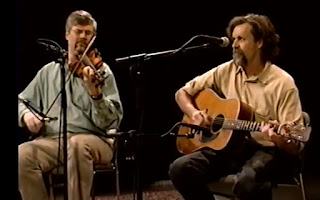A fiddler is a person who plays the fiddle, which is another term for the violin. The term "fiddle" is often used to refer to a folk instrument that is played with a bow and is used in folk music, while the term "violin" is used to refer to a classical instrument that is played with a bow and is used in classical music. However, the terms are often used interchangeably, and many musicians who play classical music also refer to their instruments as fiddles. A fiddler is a musician who plays the fiddle, which is another term for the violin. Fiddle music is a term used to describe a variety of styles of music that are played on the violin, including folk, traditional, and roots music. The term "fiddle" is often used to refer to the violin in these types of music because it is seen as a more down-to-earth and informal term than "violin," which is often associated with classical music.
Styles of music that are often referred to as "fiddle music" include folk music, bluegrass, country, Celtic, and traditional music from various cultures around the world. These styles of music are often played on the fiddle because of the instrument's versatility and ability to produce a wide range of tones and rhythms. Fiddling has a long history that dates back hundreds of years. The violin was invented in the early 16th century in Italy and quickly became popular in many different countries. Fiddle music has its roots in the traditional music of various cultures, including European, Indian, African, and American.
Fiddling has a long history that dates back to the early 16th century, when the violin was first developed in Italy. Fiddling has evolved over time and has been influenced by a wide variety of cultural and musical traditions. Today, people still fiddle for many reasons, including for enjoyment, as a form of cultural expression, and as a way to participate in the vibrant folk music community. Fiddling is still popular today because it is a fun and expressive way to make music. Many people continue to fiddle as a hobby, while others pursue it professionally. There are many fiddle festivals and competitions held around the world, and fiddlers can be found playing in a variety of settings, including at folk and roots music festivals, in country bands, and at traditional dance events.
The trajectory of fiddling has been shaped by the evolution of the violin and the various musical styles and traditions that have influenced it. In the future, it is likely that fiddling will continue to evolve and be influenced by new musical styles and trends. There will always be a place for the fiddle in music, whether it is in traditional or contemporary styles, and fiddlers will continue to play an important role in preserving and promoting this rich and varied musical tradition. It is difficult to predict the trajectory of fiddling, as it is influenced by many factors, including changing musical tastes and technological advances. However, it is likely that fiddling will continue to be an important part of many different musical traditions and will continue to be enjoyed by people around the world.
There are many famous fiddlers in a variety of musical styles today. Here are a few examples:
- American fiddlers: Some famous American fiddlers include Mark O'Connor, Alison Krauss, and Bruce Molsky. These fiddlers are known for their exceptional playing abilities and contributions to the American fiddle tradition.
- Irish fiddlers: Some famous Irish fiddlers include Martin Hayes, Caoimhín Ó Raghallaigh, and Kevin Burke. These fiddlers are known for their exceptional playing abilities and contributions to the Irish fiddle tradition.
- Klezmer fiddlers: Some famous klezmer fiddlers include Itzhak Perlman, Alicia Svigals, and Sophia Radai. These fiddlers are known for their exceptional playing abilities and contributions to the klezmer tradition.
- Indian fiddlers: Some famous Indian fiddlers include Dr. L. Subramaniam, Kala Ramnath, and Ramesh Misra. These fiddlers are known for their exceptional playing abilities and contributions to the Indian classical music tradition.
- Classical fiddlers: Some famous classical fiddlers include Anne-Sophie Mutter, Joshua Bell, and Itzhak Perlman. These fiddlers are known for their exceptional playing abilities and contributions to the classical music tradition.
These are just a few examples of famous fiddlers from different musical traditions. There are many other highly skilled and respected fiddlers who are making significant contributions to their respective musical styles.
Who are some Famous Fiddlers today? What makes them famous?
There are many famous fiddlers in various musical styles, including American, Irish, Klezmer, Indian, and classical. Here are a few examples:
- Jason Carter: Carter is an American fiddler who is known for his virtuosity and versatility. He has won numerous awards for his playing and has recorded numerous albums as a solo artist and with various ensembles.
- Eileen Ivers: Ivers is an Irish-American fiddler who is known for her electrifying stage presence and innovative style. She has recorded numerous albums and has played with many notable musicians, including Bono and the Chieftains.
- Itzhak Perlman: Perlman is an Israeli-American classical violinist who is also an accomplished fiddler. He is known for his technical proficiency and expressive playing, and has recorded numerous albums and performed with many of the world's leading orchestras.
- L. Subramaniam: Subramaniam is an Indian classical violinist who is also a skilled fiddler. He is known for his innovative approach to Indian classical music and has recorded numerous albums and performed with many of the world's leading orchestras.
- Alicia Svigals: Svigals is an American klezmer fiddler who is known for her virtuosity and passion for traditional Jewish music. She has recorded numerous albums and has played with many notable musicians, including the Klezmatics.
These are just a few examples of famous fiddlers from different musical styles. There are many other skilled and respected fiddlers around the world who are known for their virtuosity and contributions to the world of music.
